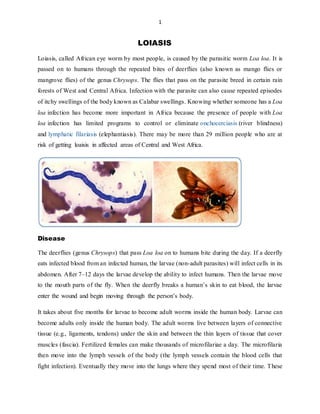Loiasis is caused by the parasitic worm Loa loa which is transmitted through the bites of deerflies in certain rainforests in West and Central Africa. Adult worms live under the skin and in connective tissues, producing microfilariae that circulate in the bloodstream. Most people are asymptomatic but some experience Calabar swellings or eye worms. Diagnosis involves finding microfilariae in blood samples or detecting antibodies. Treatment uses diethylcarbamazine or albendazole but heavy infections require specialist care due to risks of inflammation. There is no vaccine and prevention focuses on avoiding deerfly habitats and using insect repellents.




